
Discover how the 2021 crypto gaming boom unfolded. Explore Sandbox, Gala Games, and Decentraland’s rise & lasting impact on Web3.
Author: Tanishq Bodh
Published On: Fri, 22 Aug 2025 23:34:12 GMT
The year 2021 was the breakout moment for crypto gaming and the metaverse. What started as small blockchain experiments turned into mainstream headlines and billion-dollar economies.
At the center of this surge was NFT mania. Digital collectibles exploded in value as blockchain proved ownership of art, items, and virtual land. At the same time, play-to-earn (P2E) models reshaped how people thought about gaming. For the first time, players could turn hours of gameplay into real-world income. In places like the Philippines, Axie Infinity became a lifeline, with scholarship programs paying thousands of players each month.
Momentum spiked further in October 2021 when Facebook rebranded to Meta. The move signaled that the world’s largest social platform was betting big on virtual worlds. Token prices soared overnight as investors scrambled to get exposure to “the next internet.” Celebrities like Snoop Dogg and brands like Adidas piled in, fueling the hype cycle. Media outlets from CNBC to Forbes plastered metaverse headlines daily, creating a FOMO feedback loop.
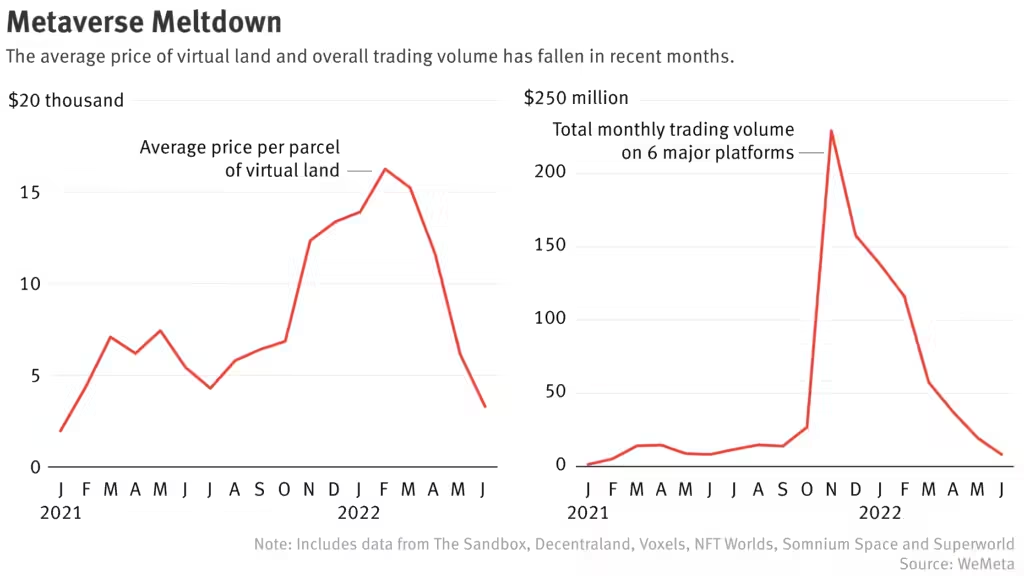
These numbers underline just how intense the speculation became.
Several forces came together in 2021:
The result was a gold rush mentality. Stories of overnight millionaires and million-dollar land flips filled social media, pulling more players and investors in.
Each project had its strengths. Axie led the P2E wave, Sandbox and Decentraland became metaverse symbols, Gala built a crypto gaming ecosystem, Illuvium targeted premium gamers, and Enjin became the builder’s toolkit.
The Sandbox began in 2011 as a mobile game studio founded by Arthur Madrid and Sébastien Borget under Pixowl. In 2018, Animoca Brands acquired the project and transformed it into a blockchain-based metaverse. Its mission was simple yet ambitious: empower creators to build, own, and monetize virtual experiences inside a decentralized economy. As Borget described in 2021, The Sandbox aimed to become “a new nation forming” through virtual commerce and culture.
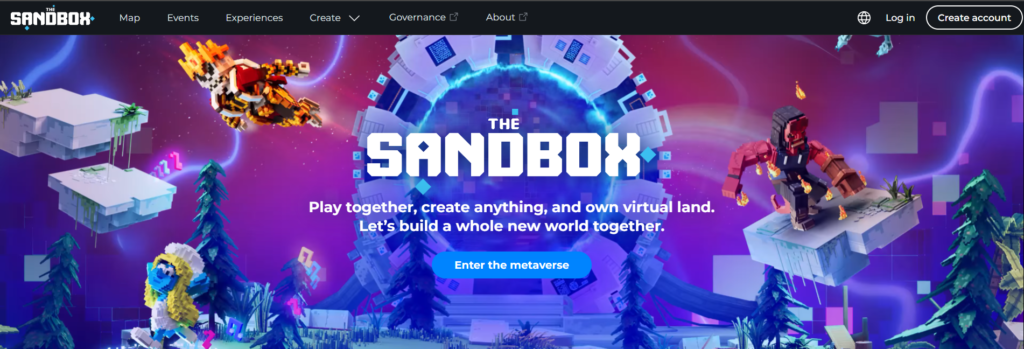
This focus on user-generated content (UGC) set Sandbox apart. Players could design their own mini-games, build businesses, or run social hubs, all monetized through play-to-earn mechanics.
2021 was the breakout year. A SoftBank Vision Fund 2 investment of $93 million in November signaled strong institutional confidence. At the same time, celebrity and brand partnerships exploded:
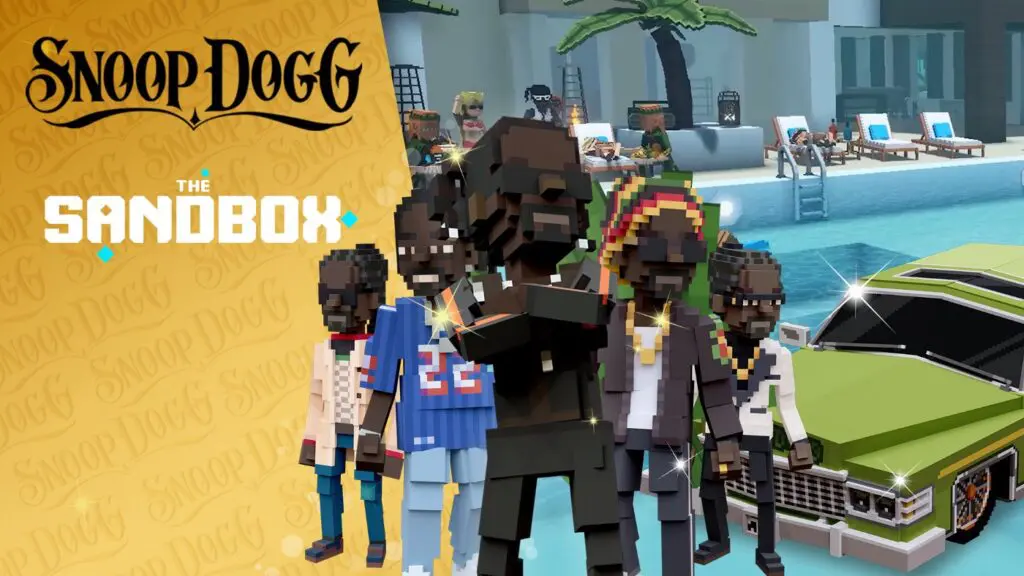
User adoption soared. By year-end, more than 500,000 connected wallets and millions of community members were active across social channels. LAND sales rocketed, with average plot prices climbing from $100 to over $10,000.
SAND mirrored the hype: starting at $0.04 in January and peaking at $8.40 in November 2021, with a market cap topping $7 billion. The Meta rebrand in October amplified interest, and media buzz around Snoop Dogg fueled virality.
Founded in 2019 by Zynga co-founder Eric Schiermeyer, Gala Games entered the scene with a mission: decentralize crypto gaming and give power back to players. At the first 2021 gaming event galaverse, Schiermeyer declared this the dawn of a “blockchain generation of gaming.”
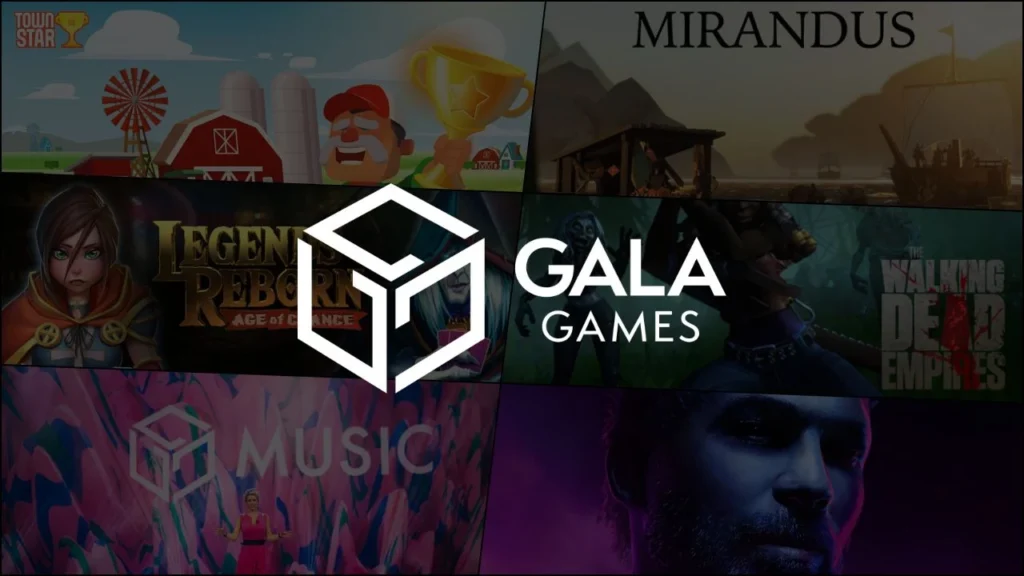
Gala Games focused on building not just one game but an entire ecosystem.
This multi-game strategy set Gala apart from land-focused metaverses like Sandbox or Decentraland.
Price action reflected the excitement. GALA surged from under $0.001 in January to $0.83 in November 2021, pushing market cap past $5 billion. Unlike Sandbox’s UGC focus or Decentraland’s DAO model, Gala leaned into 2021 crypto gaming-first economies with decentralized infrastructure built around nodes.
Decentraland traces its roots to a 2015 whitepaper by Ari Meilich and Esteban Ordano. It was one of the earliest blockchain-based metaverses to embrace DAO governance, ensuring that its world would always be community-owned. After years of development, it launched fully in 2020, with users voting on updates and policies through its DAO.
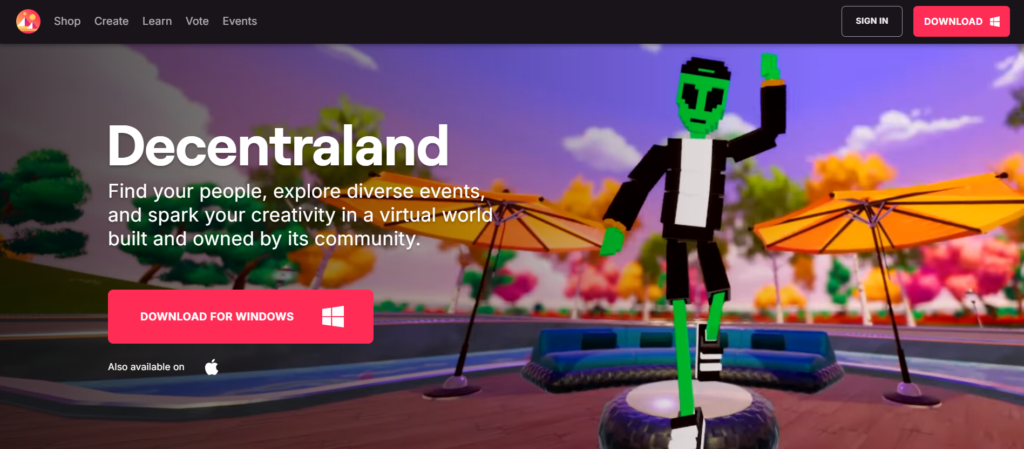
MANA, the native token, had a total supply of 2.19 billion, powering governance, LAND purchases, and transactions.
User numbers grew, with 300,000+ monthly active users by year-end. MANA’s price exploded from $0.08 in January to $5.85 in November 2021, reaching a $6B+ market cap.
Decentraland stood out for its emphasis on community governance and culture-driven events. While Sandbox leaned on UGC partnerships and Gala built gaming-first economies, Decentraland was about virtual society itself—festivals, fashion, and DAO-led experiments.
To understand how these three projects shaped the 2021 boom, it helps to compare them directly:
| Aspect | The Sandbox (SAND) | Gala Games (GALA) | Decentraland (MANA) |
|---|---|---|---|
| Founding Year/Team | 2011 (Pixowl; acquired by Animoca in 2018); Arthur Madrid, Sébastien Borget | 2019; Eric Schiermeyer (Zynga co-founder) | 2015; Ari Meilich, Esteban Ordano |
| Core Focus | UGC metaverse with voxel building and monetization | Gaming ecosystem with multiple titles and node decentralization | DAO-governed metaverse emphasizing land ownership and community events |
| Tokenomics | SAND; 3B supply; used for transactions, staking, governance, and asset purchases | GALA; 50B supply; used for governance, in-game purchases, and node rewards | MANA; 2.19B supply; used for governance, LAND purchases, and economy |
| Key 2021 Highlights | Adidas and Snoop Dogg partnerships; Atari tie-ups; $93M SoftBank raise; Alpha launch | $100M blockchain gaming fund with C2 Ventures; Galaverse event; Town Star release | $2.4M land sale; Art Week; Fashion Week announcement; Atari collaboration |
| Price Action 2021 | ~$0.04 → $8.40 peak (Nov 25); >$7B market cap | <$0.001 → $0.83 peak (Nov 26); >$5B market cap | $0.08 → $5.85 peak (Nov 25); >$6B market cap |
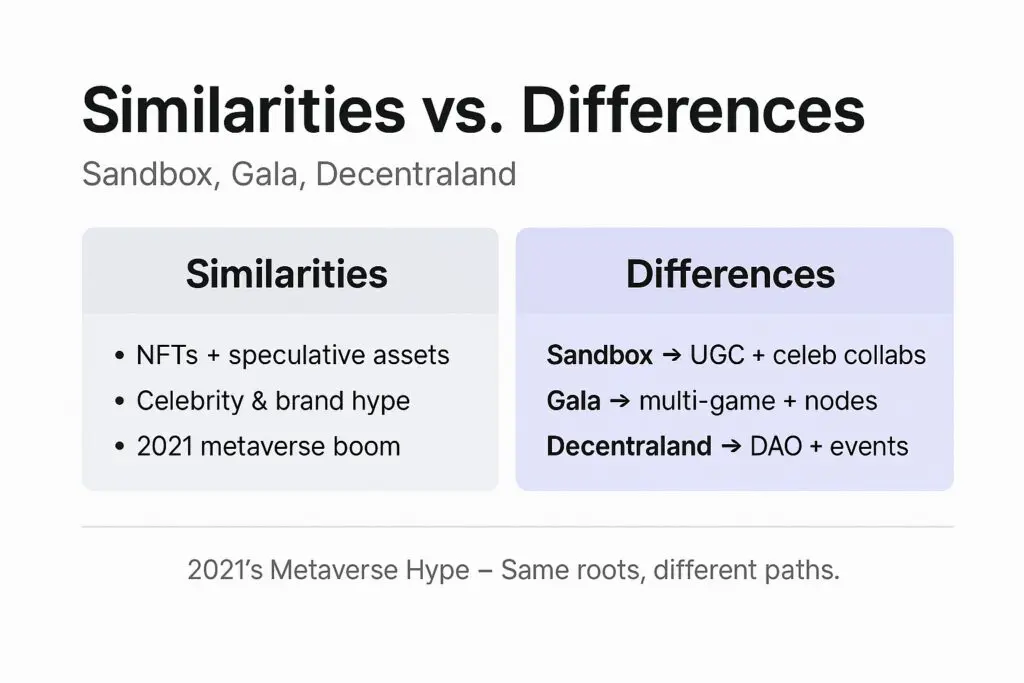
The Sandbox, Gala, and Decentraland defined the 2021 cycle. They showcased what blockchain gaming and metaverses could achieve when combined with NFT mania, play-to-earn hype, and big-name endorsements.
Sandbox, Gala, and Decentraland became the poster children of the 2021 metaverse explosion. They harnessed the perfect storm of NFT adoption, P2E excitement, and the Meta rebrand. With partnerships, events, and token surges, they captured the world’s attention.
The lesson is clear: innovation mixed with hype can drive historic growth, but sustainability requires utility. These platforms showed what’s possible but also exposed the risks of speculative markets.
As of 2025, their legacies remain influential. They popularized digital ownership, creator-driven economies, and community governance, which are now central to Web3’s gaming narrative. With AI integrations and interoperable ecosystems rising, the next wave of GameFi will build on these foundations.
The question for builders and players is no longer whether blockchain gaming works, it’s how fast it can scale into mainstream entertainment.

